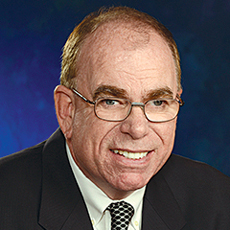
If you own equities or are involved in the skilled care sector, last week provided more than its share of bad news.
A massive Wall Street selloff caused by coronavirus fears sent equity prices plummeting. As troubling as that news was — and it seems to keep getting worse by the day — it’s a fairly safe bet the market will eventually recover.
The other frightening thing was the release of a LeadingAge report called “Nursing Home Closures and Trends, June 2015-2019.” Its key finding: more than 500 facilities have shut down in the past four years.
In a field with only 15,000 or so facilities to begin with, that’s a pretty jarring trend. And unlike the stock market downturn, we don’t have much reason to hope for a trend reversal any time soon.
To be sure, the report is a very good one. And the leading reasons cited for the industry downturn are spot on: heavy regulatory oversight and inadequate Medicaid reimbursement. Both have taken a heavy toll and continue to do so.
But there is another reason at play that the report didn’t much dwell on: market forces.
These forces are at play in two unsettling ways. The first is that competition for customers is rising at all levels. Senior living operators are now taking care of many residents that a few decades ago would have been in skilled care settings. In fact, this alternative has basically removed the private-pay, low-acuity residents that were once skilled care’s most desirable customers. Home care too has made inroads. Many post-op patients are bypassing skilled care and going straight home. As to whether that is an optimal care approach, the jury remains out. Regardless, it’s clearly happening.
The other related reality is this: many skilled care settings are, well, undesirable. To be sure, innovation is happening. But the undeniable truth is that many facilities continue to look much as they did decades ago: cramped, smelly, dark and notoriously understaffed.
As for the proof in the pudding, it’s this: the numbers don’t lie. As they teach in Econ 101, when supply goes down, demand typically rises. Yet that’s not what’s happening with skilled care. Supply is going down, and so too are occupancy levels. That’s not exactly a ringing endorsement of existing product.
But all is not lost. As the report notes, a growing aging population should help increase skilled care demand in the coming years. The expansion of the Critical Access Hospital program may offer relief in rural areas. Then there’s the option mentioned in the report that probably has the best fighting chance as a game changer: better integration of residential and non-residential services.
To be sure, it would be nice if regulations were trimmed and Medicaid funding becomes more generous. However, the facility-closings trend we’re seeing is unlikely to reverse itself until skilled care becomes a more desirable option — both for private and public payers.
But as they say, that is easier said than done.
John O’Connor is Editorial Director for McKnight’s




